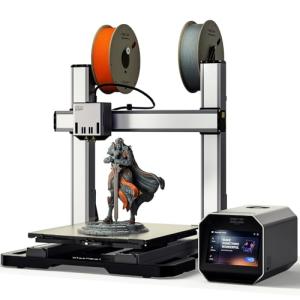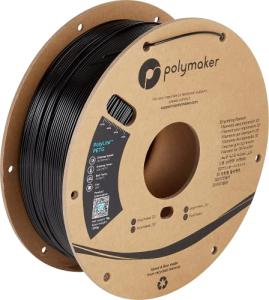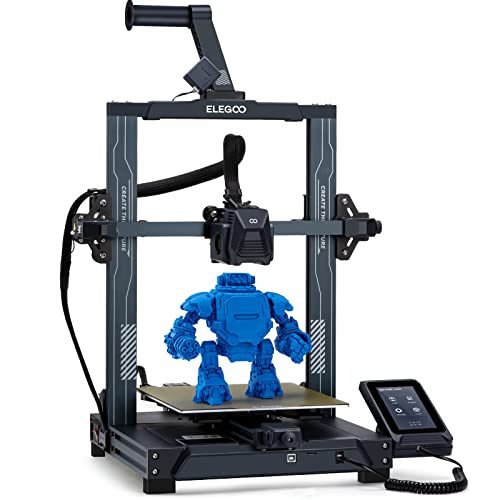When it comes to 3D printer filament, choosing the right type can make or break your project. Each material has its own unique features, making them suitable for different applications. Let's dive into some of the best types you'll want to consider.
PLA (Polylactic Acid) is a popular go-to for beginners. It’s easy to print with and produces beautiful, detailed results. If you're making prototypes, toys, or decorations, PLA is your best buddy. It's biodegradable, too, which is a nice bonus if you're eco-conscious. Just remember: it may not handle high temperatures well.
ABS (Acrylonitrile Butadiene Styrene) is a sturdy option, perfect for functional parts. Think about items like phone cases or even small mechanical components. ABS offers better heat resistance compared to PLA, but it can be a bit tricky to print. You'll want good ventilation if you're using this filament, as it can emit fumes during the process.
PETG (Polyethylene Terephthalate Glycol) blends the best of both worlds. It combines the ease of PLA with the durability of ABS. PETG is resistant to impact and moisture, making it great for practical items like water bottles or containers. The glossy finish also adds a nice touch to your prints!
For those looking to add some flair, TPU (Thermoplastic Polyurethane) is a flexible filament that’s perfect for items that require some stretch, like phone cases and wearable items. It’s a bit more challenging to print but totally worth it if you need something that bends without breaking.
Understanding Filament Properties
PLA, or polylactic acid, is one of the most popular choices. It’s super easy to print with, making it perfect for beginners. Plus, it’s biodegradable, which is a nice touch for eco-conscious makers. If you want vibrant colors and good detail in your prints, PLA is often the way to go. Just keep in mind that it’s not the best for high-temperature applications.
ABS is another common filament that’s a bit tougher and more heat-resistant than PLA. This makes it ideal for functional parts and prototypes that need to withstand stress or higher temperatures. However, printing with ABS can be tricky since it warps easily. So, you might want to have a heated bed and some good ventilation while working with it.
If you’re looking for something even more specialized, check out PETG. It combines the best features of PLA and ABS, offering great strength and flexibility without some of the printing headaches. It’s also resistant to moisture, making it a solid choice for outdoor projects. There’s a bit of a learning curve, but many find it worth the effort.
Remember, the right 3D printer filament can elevate your prints. Each type comes with its own set of advantages and challenges. Knowing what you want to achieve with your projects will guide you in picking the perfect filament.
Snapmaker Artisan Dual Extruder Industrial 3D Printer
The Snapmaker Artisan Dual Extruder 3D Printer brings your creative ideas to life with precision and versatility
Product information
$1,449.00
Product Review Score
4.76 out of 5 stars
112 reviewsProduct links
Tips for Choosing the Right Filament
Picking the right 3D printer filament can feel a bit overwhelming, but it doesn’t have to be! Start by figuring out what you want to make. Different projects require different materials. For example, if you're making something sturdy, ABS or PETG might be your go-to. If you’re after something flexible, try TPU. No matter what you're making, knowing the purpose is key to making the right choice.
Next, consider the temperature requirements. Some filaments need higher temperatures to print properly. If your 3D printer doesn’t reach those temps, you’ll be frustrated when the filament won’t stick. Look at your printer’s specifications and match it with the filament’s needs to ensure a smooth printing experience.
Don’t forget about adhesion and finishing! Some filaments stick super well to the print bed, while others can be a bit tricky. If you want to avoid warping or peeling, going with a filament like PLA is a safe bet. If you're aiming for a nice finish, a little sanding or painting can work wonders, especially with materials like ABS.
Finally, think about availability and cost. You can find tons of filament options, but not all are created equal. Stick with reputable brands that offer consistent quality and their materials won't break the bank. Check reviews and don’t hesitate to ask fellow makers for recommendations. Choosing the right 3D printer filament should be fun and rewarding!
Polymaker PolyLite PETG 2.85mm Black Filament
Get high-quality prints with this durable and versatile filament that’s perfect for all your projects
Product information
$22.99 $18.39
Product Review Score
4.91 out of 5 stars
181 reviewsProduct links
How to Store Your Filament Properly
Storing your 3D printer filament the right way can make a world of difference in print quality. If you want to get the most out of your filament, keep these tips in mind.
First off, moisture is your enemy. 3D printer filament, especially types like PLA and nylon, loves to soak up humidity. Keep your filament in a cool, dry place. Vacuum-sealed bags or airtight containers work great. Toss in some desiccant packs to absorb any extra moisture. This simple step can prevent filament issues like bubbling or inconsistency in your prints.
Next, temperature matters too. Extreme heat can warp your filament. Store it away from direct sunlight and heat sources. A closet or a dedicated drawer can be perfect. If you have a lot of spools, try to keep them upright to avoid any unwinding or tangling.
Finally, keep an eye on your filament’s lifespan. Some materials can go bad over time, especially if not stored properly. Check your filament every few months. If you see brittleness or discoloration, it might be time to replace it. With the right storage, your 3D printer filament will be ready to go whenever inspiration strikes.





